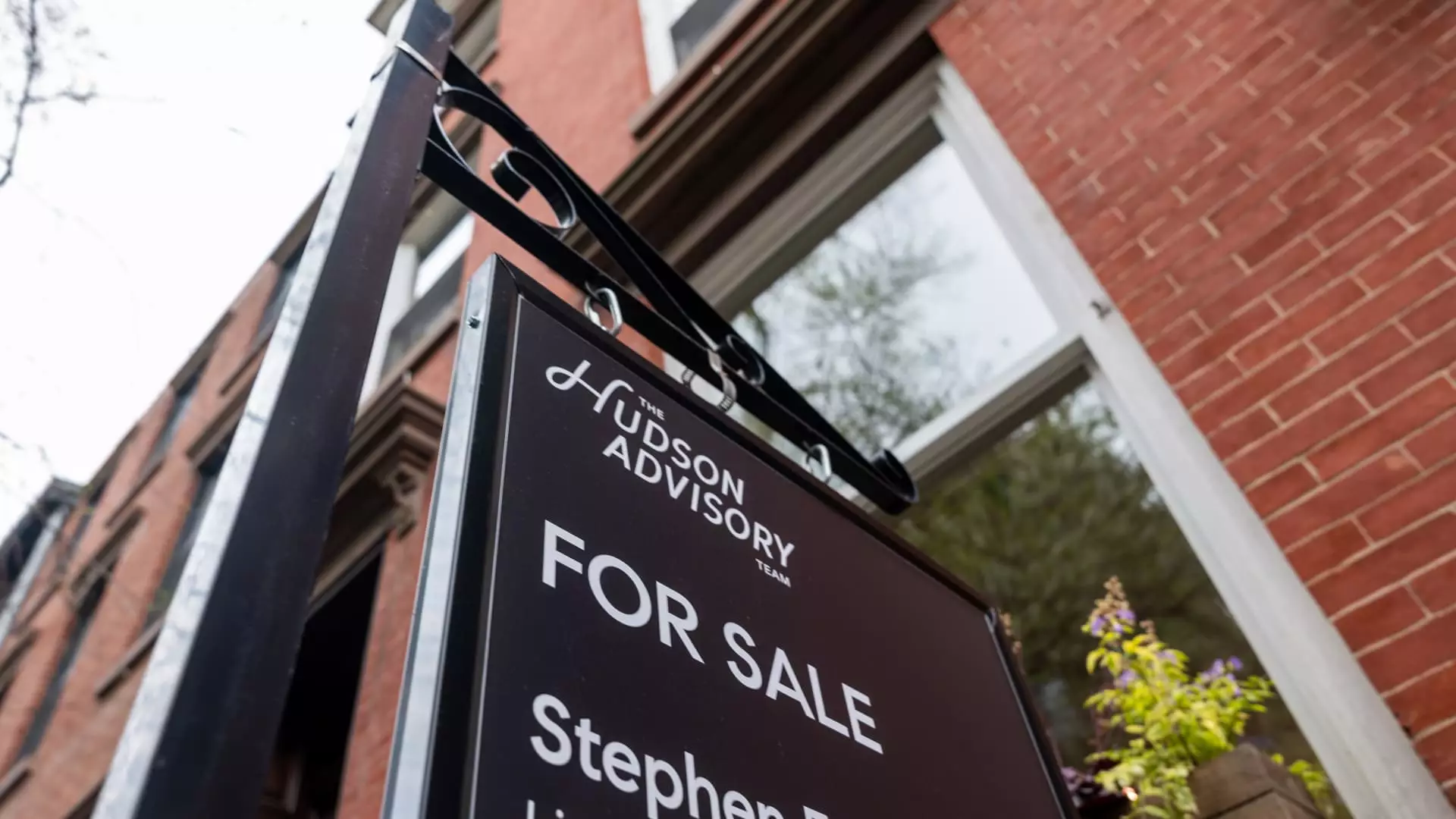In a disconcerting financial landscape, the latest data reveals that the average rate on a 30-year fixed mortgage has surged to an alarming 7.1%. This marks the highest point since mid-February and reflects a broader trend of volatility that has left potential homeowners grappling with uncertainty. The recent spiking bond yields, primarily triggered by President Trump’s convoluted tariff policies, further complicates the already shaky footing of American consumers seeking to invest in their dream homes.
Mortgage rates are closely tied to the yield of the 10-year Treasury, which means that shifts in government bond yields reverberate through the housing market. As economic indicators fluctuate, we witness significant repercussions for families aiming to secure stable housing in an ever-unstable environment. This unsettling spike creates not just an immediate financial burden but also fosters a general air of discouragement among many aspiring homeowners.
Political Turmoil and Its Consequences
The intertwining of political decisions, such as the imposition and subsequent revision of tariffs, showcases the precarious balance that governs the financial realm. Trump’s erratic tariff increases, notably the exorbitant 145% tax on Chinese imports, exposes how geopolitical strategies can adversely impact the everyday American’s finances.
Matthew Graham, chief operating officer at Mortgage News Daily, poignantly highlights the severity of current bond market conditions, claiming that unless a person’s career began prior to 1981, the volatility witnessed recently is unprecedented. Indeed, a mere slip in government policy can send ripples across industries as vital as housing, illustrating how political decisions can escalate into profound financial consequences for everyday citizens.
Consumer Sentiment: A Barometer for Economic Health
Another headwind that complicates the housing market is the unsettling consumer sentiment report, which undershot expectations considerably. Consumers’ outlook regarding inflation skyrocketed from 5% to 6.7%, the highest seen in over four decades. This sharp jump not only underscores the precarious economic climate but also illuminates a worrying trend where the average American feels less secure about their financial future. With the spring housing season in full swing, these sentiments strike directly at the heart of consumers who view homeownership as a pinnacle of financial success.
The daunting prospect of locking in a mortgage at 7.1% means that many potential buyers are left pondering if homeownership may no longer be a feasible goal. This dilemma is exacerbated by rising inflation, leading to a cycle of indecision and cautious financial behavior. The nexus between a family’s most significant investment and their overall economic stability has never been more evident.
The Paradox of Opportunity and Despair
Amidst these turbulent waters, one must reflect on the reality our society faces. For many, owning a home symbolizes more than just the roof over one’s head; it embodies financial empowerment and security. Yet, as we wrestle with fear and uncertainty, we find ourselves engulfed in a paradox where the dream of homeownership feels tantalizingly out of reach for an increasing number of individuals.
It’s imperative that policymakers begin to recognize the severity of this crisis, instead of engaging in finger-pointing or politicization of economic matters. The road ahead requires thoughtful, measured responses that prioritize stabilizing housing prices and creating an environment where homeownership remains a tangible aspiration rather than a fading dream.


Leave a Reply